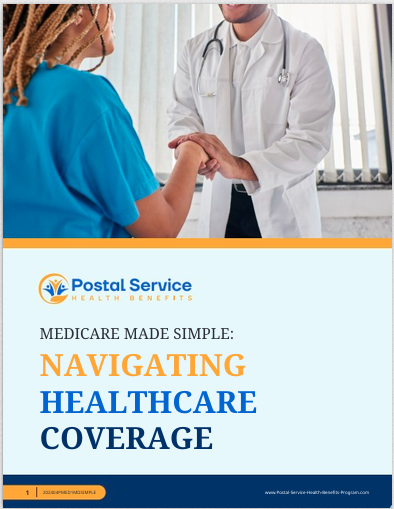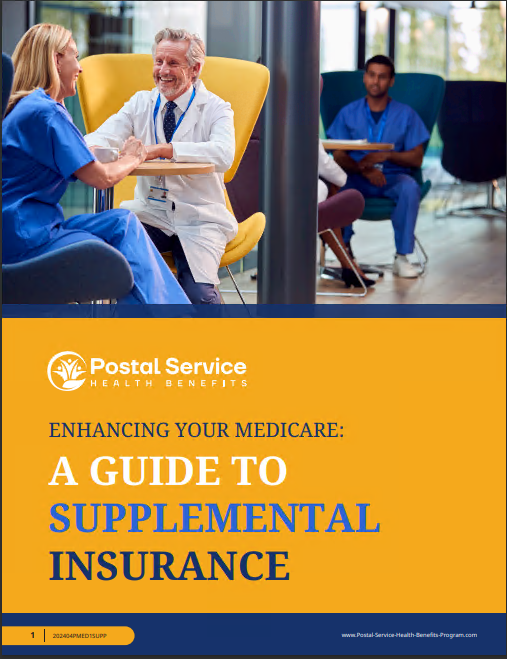Key Takeaways:
- Postal employees will experience changes in their health benefit premiums in 2025 due to the Postal Service Health Benefits (PSHB) program, which will now cover all postal employees.
- Understanding the costs, coverage options, and deadlines is essential for making informed health benefit decisions in the upcoming year.
What Postal Employees Should Expect in Health Benefit Premiums and Costs in 2025
As the U.S. Postal Service (USPS) moves forward with implementing the Postal Service Health Benefits (PSHB) program in 2025, postal employees must prepare for significant changes in their health benefit premiums and costs. These adjustments will affect how postal employees select their health insurance plans and manage their healthcare expenses. Understanding the dynamics of these changes, including what drives them and how they impact overall costs, is critical for postal workers as they navigate the 2025 enrollment period.
Overview of the Postal Service Health Benefits (PSHB) Program
In 2025, the PSHB program will officially begin, replacing the Federal Employees Health Benefits (FEHB) program for USPS employees and retirees. The transition to the PSHB program is a result of the Postal Service Reform Act of 2022, designed to ensure that USPS employees have dedicated healthcare options tailored specifically for their needs. One of the primary goals of this shift is to better align the benefits with the unique requirements of postal employees while also addressing long-term financial sustainability for the USPS.
The PSHB program will mirror many aspects of the FEHB program, but with key differences that postal employees must understand. For example, premiums, cost-sharing mechanisms, and eligibility criteria are expected to evolve under PSHB. Additionally, retirees under the age of 65 will need to pay special attention to the new requirements, such as mandatory enrollment in Medicare Part B to maintain their PSHB coverage.
Anticipated Changes in Health Benefit Premiums
Postal employees can expect to see changes in their health benefit premiums in 2025, driven by several factors, including the structure of the new PSHB program and broader trends in healthcare costs. Premiums will be influenced by the risk pool associated with postal workers, the level of benefits chosen, and the integration with Medicare for eligible retirees.
The specific premium rates for 2025 will be determined in late 2024, and these will reflect both the cost of healthcare services and the financial health of the PSHB fund. Historically, premium increases have been driven by rising healthcare costs, including hospital services, prescription drugs, and medical technologies. Postal employees should anticipate similar trends, albeit potentially moderated by the unique characteristics of the PSHB program.
Cost Considerations Beyond Premiums
While premiums are a significant component of health benefit costs, postal employees must also consider other expenses such as deductibles, copayments, and out-of-pocket maximums. The PSHB program is expected to introduce new cost-sharing structures that may differ from those under the FEHB program, affecting how much employees pay out-of-pocket for medical services.
For instance, employees might face different deductibles based on the plan they choose, which could impact their overall healthcare costs. Additionally, copayments for services such as primary care visits, specialist consultations, and prescription medications may vary depending on the selected plan. Postal workers should carefully review these elements to understand the full scope of their healthcare expenses under the PSHB program.
How Will Medicare Integration Affect Costs?
One of the most significant changes under the PSHB program is the mandatory enrollment in Medicare Part B for retirees aged 65 and older. This requirement aims to reduce the overall cost burden on the PSHB program by leveraging Medicare as the primary payer for eligible retirees. However, this integration also means that retirees will need to factor in the cost of Medicare Part B premiums, which are separate from their PSHB premiums.
For many retirees, the integration with Medicare will result in a more comprehensive coverage package, potentially reducing out-of-pocket expenses for covered services. However, those approaching retirement need to be aware of the deadlines for enrolling in Medicare to avoid late enrollment penalties and ensure continuous coverage. Understanding the coordination between Medicare and PSHB will be essential for retirees to manage their healthcare costs effectively.
Key Dates and Deadlines for Postal Employees
As postal employees prepare for the transition to the PSHB program, they should be mindful of key dates and deadlines to ensure they make informed decisions. The open enrollment period for 2025 benefits will likely occur in the fall of 2024, providing employees with the opportunity to compare PSHB plan options and select coverage that best meets their needs.
During this period, it will be crucial for employees to review the specific benefits, premiums, and cost-sharing provisions of the available plans. Additionally, retirees who are or will be Medicare-eligible should plan to enroll in Medicare Part B during the designated enrollment periods to avoid gaps in coverage and additional costs.
Practical Tips for Navigating Health Benefit Changes
Given the significant changes coming with the PSHB program, postal employees should take proactive steps to navigate these adjustments effectively:
-
Stay Informed: Regularly check USPS and federal government communications for updates on the PSHB program, including premium rates, coverage options, and enrollment deadlines.
-
Review Plan Options Carefully: During the open enrollment period, compare the available PSHB plans, focusing on premiums, coverage details, and out-of-pocket costs to determine the best fit for your healthcare needs.
-
Understand Medicare Integration: If you are approaching Medicare eligibility, familiarize yourself with the coordination between Medicare and the PSHB program. Ensure timely enrollment in Medicare Part B to avoid penalties and ensure seamless coverage.
-
Consult with Licensed Insurance Agents: For personalized advice, consider speaking with licensed insurance agents who can provide insights into the nuances of the PSHB program and help you make informed decisions about your health benefits.
-
Budget for Healthcare Costs: Factor in all potential healthcare expenses, including premiums, deductibles, and copayments, to create a realistic budget that aligns with your financial situation.
Preparing for the 2025 Enrollment Period
The upcoming 2025 enrollment period will be a critical time for postal employees to evaluate their health benefits under the new PSHB program. With changes in premiums, cost-sharing structures, and the integration with Medicare, employees and retirees need to be well-prepared to make decisions that will impact their healthcare and financial well-being.
By staying informed, reviewing options carefully, and understanding the key components of the PSHB program, postal employees can navigate the transition smoothly. Additionally, seeking advice from licensed insurance agents and budgeting for healthcare costs will be essential strategies for managing the changes ahead.
Final Thoughts on Health Benefit Costs for Postal Employees
As postal employees approach 2025, understanding the evolving landscape of health benefit premiums and costs is crucial. The PSHB program represents a significant shift in how USPS employees and retirees will access and manage their healthcare. While the changes may introduce some complexities, being proactive and informed will help postal workers make the best choices for their health and financial security.
Preparing for these changes well in advance of the enrollment period will ensure that postal employees are ready to select the right coverage and navigate the new cost structures effectively. The integration with Medicare for eligible retirees adds another layer of consideration, making it even more important to understand the details of the PSHB program and how it aligns with individual healthcare needs.
Contact Information:
Email: [email protected]
Phone: 9364196707







